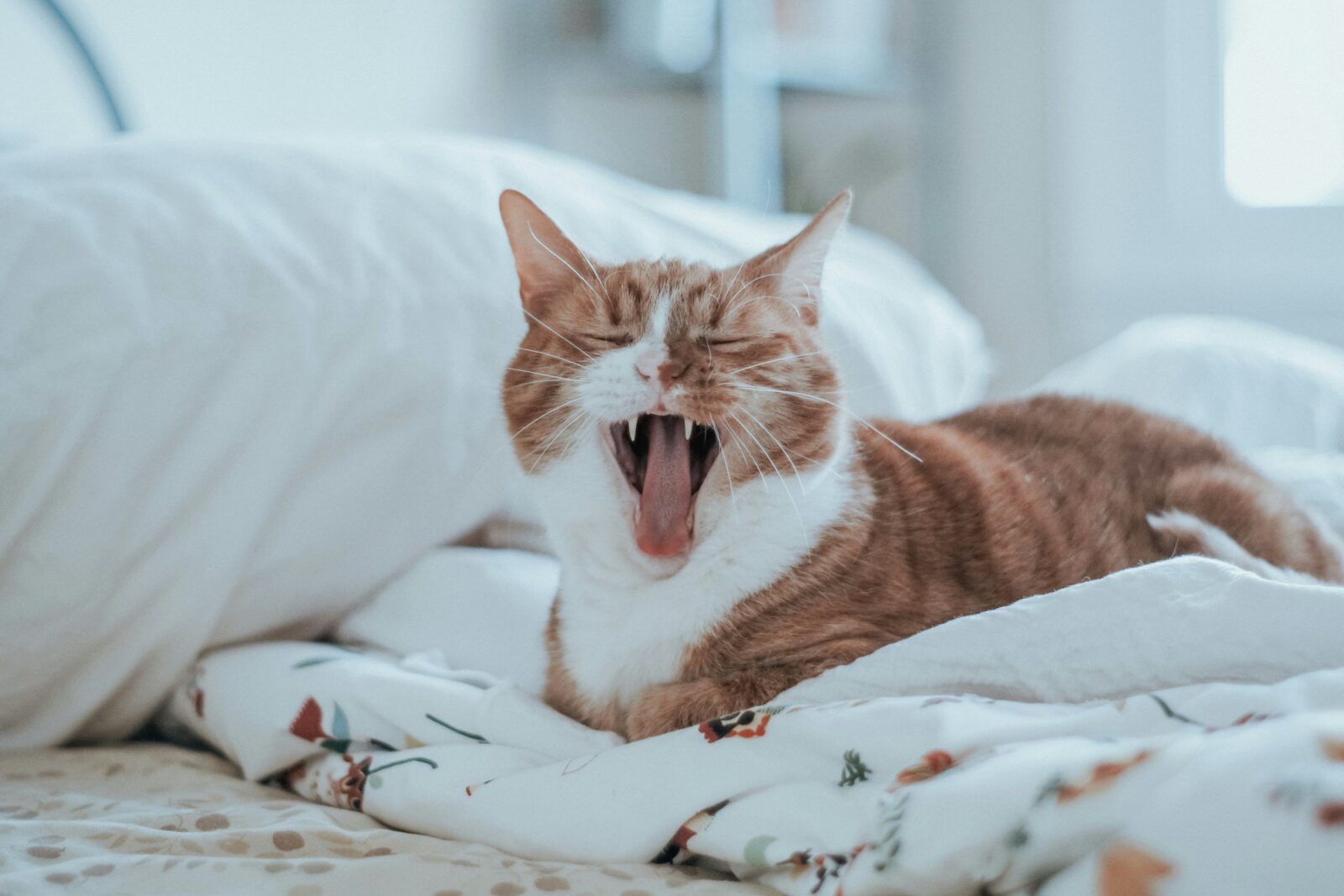Cats and dogs are often considered part of the family, but unlike humans, they can’t communicate through words. Instead, they use body language to express their feelings, desires, and discomforts. Understanding these subtle signals is crucial for building a strong bond with your pets and ensuring their well-being. In this guide, we’ll explore the various aspects of cat and dog body language, helping you to interpret what they’re really saying.
Why Understanding Pet Body Language Matters
Before diving into the specific signals, it’s important to understand why decoding pet body language is essential:
- Enhances Communication: Understanding body language helps you respond to your pet’s needs more effectively, fostering better communication.
- Prevents Behavioral Issues: Recognizing signs of stress or discomfort can help prevent behavioral issues from developing or worsening.
- Ensures Safety: By reading warning signals, you can avoid potentially dangerous situations, such as bites or aggressive behavior.
- Strengthens Bond: Being attuned to your pet’s emotions can strengthen the bond you share, leading to a more harmonious relationship.
Understanding Dog Body Language
Dogs are social animals with a wide range of body language signals. Here’s how to interpret some of the most common gestures and behaviors in dogs:
1. Tail Wagging
- Fast Wagging with Wide Swings: This usually indicates excitement and happiness. Your dog is likely feeling friendly and eager to interact.
- Slow Wagging: This can signal uncertainty or insecurity. The dog is assessing the situation and may be unsure of how to proceed.
- High, Stiff Tail Wag: When a dog holds its tail high and wags it stiffly, this can indicate alertness or even a warning sign of dominance or aggression.
- Low, Tucked Tail: A tail tucked between the legs is a clear sign of fear, anxiety, or submission.
2. Ears
- Erect and Forward: This indicates attentiveness and interest. The dog is focused on something specific, whether it’s a sound, sight, or smell.
- Pulled Back: Ears that are pinned back against the head can indicate fear, anxiety, or submission. In some cases, it can also mean the dog is being friendly and non-threatening.
- Relaxed Ears: When a dog’s ears are in their natural position, it suggests that the dog is calm and content.
3. Eyes
- Soft, Blinking Eyes: Slow blinking or soft eyes indicate relaxation and friendliness. Your dog is comfortable and feels safe.
- Wide, Staring Eyes: Wide eyes or a hard stare can signal discomfort, stress, or a potential for aggression. This is often seen when a dog is guarding something valuable.
- Avoiding Eye Contact: If a dog avoids eye contact, it often means they are being submissive or trying to avoid confrontation.
4. Mouth
- Relaxed, Slightly Open Mouth: A dog with a relaxed, open mouth and possibly a lolling tongue is generally content and at ease.
- Lip Licking and Yawning: These can be calming signals indicating stress or unease. Dogs often use these behaviors to calm themselves or diffuse tension.
- Showing Teeth or Growling: This is a clear warning sign. A dog baring its teeth or growling is signaling that it feels threatened or is ready to defend itself.
5. Body Posture
- Play Bow: When a dog lowers its front legs and raises its rear, it’s inviting you or another dog to play. This is a friendly and joyful gesture.
- Stiff, Rigid Posture: A stiff body with raised hackles (hair on the back) indicates aggression or defensiveness. The dog is on high alert and ready to react.
- Rolling Over: Rolling onto the back with the belly exposed can be a sign of submission. However, it can also indicate trust and comfort, especially if the dog feels safe with you.
Understanding Cat Body Language
Cats are more subtle than dogs in their body language, often making them harder to read. Here’s how to interpret common cat behaviors:
1. Tail Movements
- Upright Tail with a Curve at the Tip: This tail position indicates a friendly and relaxed cat. The cat is likely in a good mood and open to interaction.
- Puffed-Up Tail: A puffed-up tail is a sign of fear or aggression. The cat is trying to make itself look larger to ward off a perceived threat.
- Twitching or Lashing Tail: A rapidly twitching or lashing tail suggests irritation or frustration. This is a sign that the cat may need some space.
- Tail Tucked Under: When a cat tucks its tail under its body, it indicates fear, anxiety, or submission.
2. Ears
- Erect and Forward: Ears that are pointed forward suggest that the cat is alert and interested in what’s happening around them.
- Flattened Ears: Ears that are flattened against the head are a sign of fear, anxiety, or aggression. This is a defensive posture indicating that the cat feels threatened.
- Swiveling Ears: Cats swivel their ears to locate sounds. Rapid swiveling can also indicate that the cat is feeling anxious or overstimulated.
3. Eyes
- Slow Blinking: When a cat blinks slowly at you, it’s showing affection and trust. This is a friendly gesture often referred to as a “cat kiss.”
- Dilated Pupils: Wide, dilated pupils can indicate excitement, fear, or aggression. The context and other body language cues are essential to interpret this correctly.
- Narrowed Eyes: Cats narrow their eyes when they are feeling threatened or irritated. However, slightly squinted eyes can also indicate relaxation in a safe environment.
4. Mouth and Facial Expressions
- Purring: While purring generally indicates contentment, it can also be a sign of a cat self-soothing when they are in pain or stressed.
- Hissing and Growling: These vocalizations are clear signs of fear, anger, or aggression. The cat is warning you to back off.
- Licking and Chewing: Cats may lick their lips or chew when they are anxious. This is a self-soothing behavior.
5. Body Posture
- Arched Back: An arched back with fur standing on end is a defensive posture. The cat is trying to appear larger and more intimidating to potential threats.
- Crouching: A crouching position indicates fear or readiness to pounce. The cat is either preparing to defend itself or flee from danger.
- Rubbing Against You: When a cat rubs against you, it is marking you with its scent, a sign of affection and marking territory.
Tips for Responding to Your Pet’s Body Language
Knowing how to respond to your pet’s body language is as important as understanding it. Here are some tips:
1. Respect Their Space
If your cat or dog is showing signs of fear, anxiety, or aggression, give them space. Forcing interaction can escalate their stress and potentially lead to defensive behaviors like biting or scratching.
2. Use Calming Signals
Use calming signals like speaking softly and avoiding direct eye contact if your pet seems anxious. For dogs, you can yawn or look away to show that you are non-threatening.
3. Positive Reinforcement
Reward relaxed and positive body language with treats, praise, or gentle petting. This reinforces that feeling calm and safe leads to positive outcomes.
4. Provide Safe Spaces
Ensure your pet has a safe space where they can retreat when feeling overwhelmed. This can be a quiet room for a cat or a cozy bed for a dog.
5. Consult a Professional
If you notice persistent signs of stress, anxiety, or aggression in your pet, consult a veterinarian or an animal behaviorist for guidance.
Conclusion
Understanding the body language of cats and dogs is key to a happy and harmonious relationship with your pets. By learning to interpret their signals, you can respond appropriately to their needs, ensuring their comfort and safety. Remember, every pet is unique, and their body language can vary based on their personality and experiences. Being attuned to these cues helps build a stronger bond and a more understanding relationship with your furry friends.











Leave a Reply